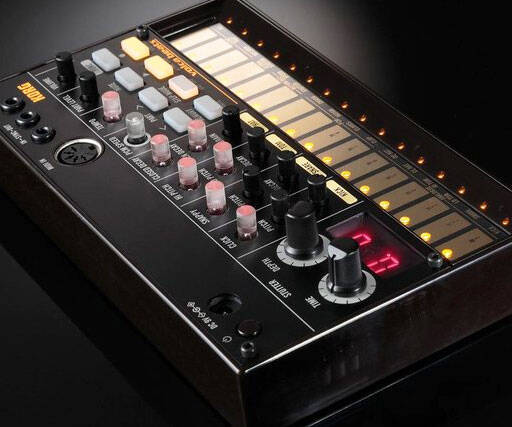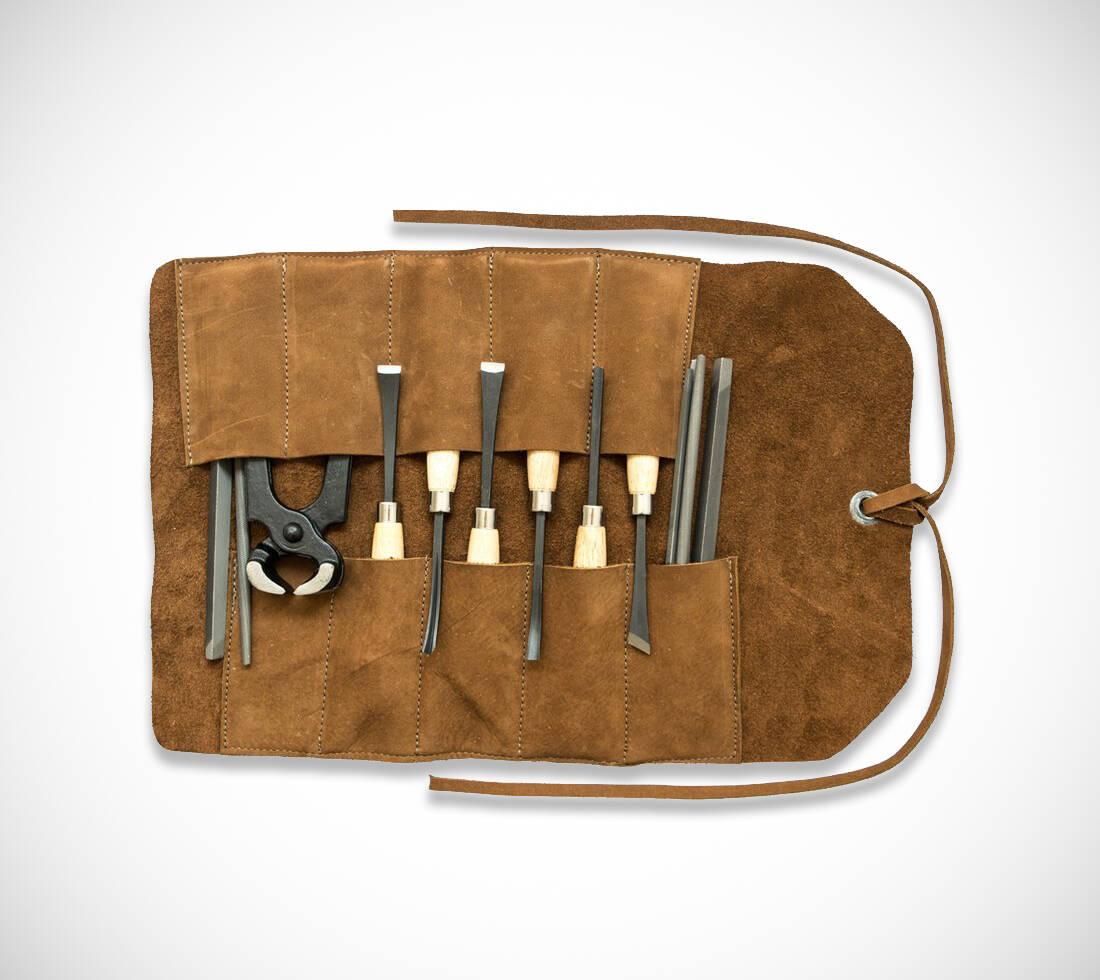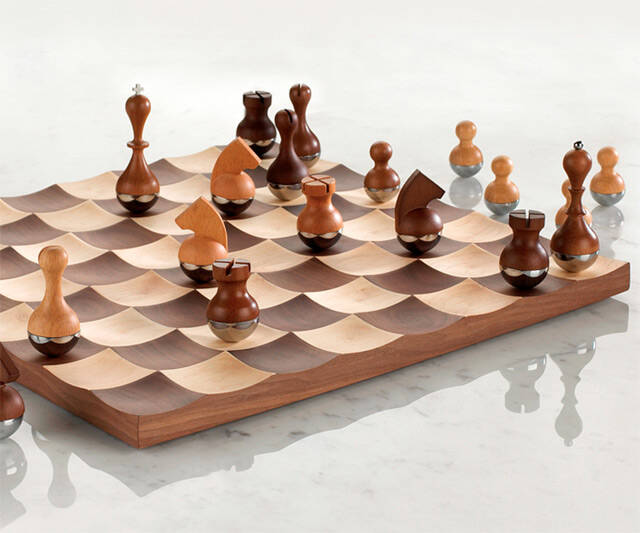Analog Rhythm Machine | ||||||||||
| ||||||||||
Product Description
Korg Volca Beats Analog Drum Machine. Volca beats is an analog rhythm machine that provides carefully selected parameters that allow the user to create a diverse array of fat sounds that can be obtained. Analog Drum Machine with 16-step Sequencer. Six analog parts and four PCM parts, fully editable.Features
- Compact and portable design with a built-in speaker for on-the-go music creation
- Features an Electribe-style 16-step sequencer for intuitive and flexible music programming
- Includes eight memory patches for storing custom sequences and patterns
- SYNC In and Out for clock synchronization with other Volca series instruments
- Stutter function for glitch or delay-like effects to enhance your music
- MIDI In for note entry, external sync, and control from your DAW
- Play anywhere with the built-in speaker and optional battery power for convenient, unplugged performances
- Real analog sounds created with reference to classic rhythm machines for powerful beats
- Minimal parameters for quick and easy sound creation, ideal for beginners and pros alike
- PCM sound engine covers sounds for which analog is unsuited, like Clap and Crash
Top Reviews
Great for pro's and beginners, lots of functionality and features.by islandsound (5 out of 5 stars)
February 27, 2017
Very versatile unit. I am still not done with this one. I did already sell my Volca beats for the same reason a lot of people complain about how it sounds. But the sample replaces a lot of what that one did anyway. I am going to hold onto this one for quite awhile as I have not yet dug into all of it's possibilities. If you are into synth gear or just starting out and what to try something on the cheap, this is it. Attached a vid of something I came up with, enjoy.
Not a full-featured sampler, but still an extremely portable, accessible, and versatile groovebox
by StormJH1,Top Contributor: Guitars (5 out of 5 stars)
February 15, 2016
The Volca Sample is the 4th addition to the Volca lineup (I own the Volca Bass also), and arguably offers the most versatility. In fact, I was looking for a fairly straightforward beatbox, and struggled between this and the analog drum sounds of the Volca Beats. Ultimately, I felt like the Beats had a few weaknesses (snare not very popular; limited arsenal of sounds) and that I could cover most of the Beats' sounds plus a whole lot more with the Volca Sample.
That being said, I think this is a 5-star product...provided that you educate yourself in advance of what it does and doesn't do. It's an extremely small plastic box that runs on 6 AA batteries and features no slot for external media (USB, SD card, etc.). I don't know how you reasonably look at those specs and expect this to be a $150 mini-MPC. But if that were your expectation, yes, you'd be a little disappointed.
The Volca Sample is special from the other Volca machines in just how flexible it can be towards a variety of needs. You could load it up with acoustic or drum machine samples and have up 10 instruments loaded with 8-instrument/note polyphony. You could load up a series of tuned notes and generate a walking bass line using either motion sequencing/automation, or by setting the same sample to different pitches. Pitch control is handled very well on the Volca Sample, in my opinion. You can change pitch with a numerical up/down value, or by semitones (2 octaves down all the way to two octaves up). This is done by the speed knob, and while lower pitched notes are basically the same sample played back more slowly, you can edit sample length, decay, and other features to balance things out. In fact, the 4x4 matrix with mini knobs in the gray section are 16 step programmable sampling parameters for you to adjust. Not only can these be adjusted for each sample, but you can live record automation or program the changes to occur at different steps. Is it a professional caliber sampler? No. Is it accessible to all levels of users and deceptively powerful for a battery powered, affordable device? Absolutely.
SAMPLE EDITING & iOS INTEGRATION - Some of the biggest complaints about the Sample are that the device was marketed as requiring an iOS device to change and edit samples. However, I view that as one of the device's selling points, and an excellent 3rd-party app from the Caustic developer quickly emerged to allow even more power over sample creation and uploading (I believe this is also available for Android and PC). iOS integration is a strength of the Sample, in my opinion, because there is such an insane wealth of affordable music content in the iOS app store. The Caustic Volca Editor easily links up with an app called AudioShare to import samples stored on your device, or imported from a cloud service like DropBox. Aside from uploading obvious samples (like .wav files of 808/909 sounds available all over the web), you can create your own without leaving your iPhone or iPad and store them in AudioShare. For example, I recorded a simple C2 note in a great app called iFretless Bass, sent it to the Caustic Volca Editor via AudioShare, and had a pitch tuned electric bass sound available on my Sample, and the whole process took maybe a couple of minutes.
Some tips/caveats: Some people have complained about the 4MB storage limit on the Volca, which is admittedly quite small. The best way to deal with this is to use the Caustic or AudioPocket editor and identify some of the longer factory samples (1 second or longer) and target those to be replaced. There are 100 sample slots for storage, but whatever you upload needs to be in place of something else, so you can free up more storage that way. Generally speaking, the Volca Sample is better suited for "one-hit" brief samples like a drum, brass hit, or clap. Sampling can also involve longer clips like 5-second guitar riffs, but the Volca Sample really isn't suited to handle that.
The fact that patterns are limited to 16-step single bars is another oft-cited problem with the entire Volca series, but there are workarounds. You can set different patterns and chain them with Song mode, or trigger them with the ribbon keys. Part of the fun of the entire Volca series, however, is taking a very brief and straightforward musical idea and then mutating with filter sweeps, modulation, and effects. The Sample excels at that, and the sound quality is great (through headphones or monitors though, just skip the built-in mini speaker). I like the "Analogue Isolator", which is basically an fancied-up name for a 2-band EQ, but which allows for some additional tone shaping and automation possibilities.
MIDI ISSUES - Unfortunately, the Sample isn't controlled via MIDI the way you might expect it to be. My understanding is that the 10 different samples respond to different MIDI Channels (1-10), as opposed being triggered by separate pads/keys on a single MIDI channel. That's a bit of bummer, but less than the other Volcas, since Live Play actually responds quite well with the touch keys (and quantizes to nearest 16th note), and you'll spend most of your time programming grooves with the step sequencer anyway. It does not respond to velocity control, though you can set the "Level" for each sample.
One final note - I think some of the negativity for the Volca Sample comes from the fact that what it offers isn't as "rare" as the Keys, Bass, and Beats. There are desktop and even mobile sampling apps that do much of what the Volca Sample does, and perhaps even more cheaply. In that sense, it isn't the same "freak of nature" that my little Volca Bass is, belting out warm, analog tones from an inexpensive, battery-powered box. But that doesn't make the usefulness of the Sample any less impressive - this little box really can do a ton. While the other Volca devices surprise you with quality of their sounds, the possibilities with the Sample are limited by only your imagination and willingness to experiment.
UPDATE (06/28/2016): Just a quick update on my review to attach a picture showing how much of a giant nerd I am, as well as the versatility of the Sample. I created a micro-sized table showing all the instruments uploaded to the device, as well as a table showing how many semitones away different notes are (since I am pretty bad at music theory). All of my pitched samples are tuned to a "C" note, so it becomes pretty easy to generate basslines and simple melodies using these charts for quick reference. The Sample allows you to load the same sample in multiple instruments slots, and since you have 8-note polyphony, you could program chords or even set up a custom keyboard where each note is within the scale/mode of your song. Again, this more of a hobby/amusement for me than serious music production, but I love exploring what this little device can do and even pushing it do things musically that it wasn't necessarily "intended" to do.
Adequate, useful, does what it claims to do. It would be much better if had panning, and if cables w
by Allmut LandLine Sprogresi (3 out of 5 stars)
March 27, 2018
I really want to like this. I ordered one of the first ones.
The good: It's a nice way to tie 3 Volcas together (or possibly 4 if you use the aux in for a 4th one). Everything is up front where you can see/reach it. It comes with power cables for your Volcas, plus a few mini audio cables. The faders are nice and quiet. It looks neat. The speakers sound fairly decent for little speakers. The RCA output is helpful. The sync feature works great (not that it was ever difficult to link/sync multiple Volcas, but hey, this is still a good feature on this mixer.
The bad: First and foremost, YOU CAN'T PAN INDIVIDUAL CHANNELS. That's right, somebody is manufacturing and selling a mixer in this century that has no pan controls! Yes, the original Volcas are all mono. But even so, I absolutely want to be able to pan-control the signal from each one as it passes through this mixer. This is a glaring omission, and the reason I am withholding 2 of the possible 5 stars in this review. Other issues: Yes, I suppose it's in keeping with the Volca design principles that everything is on top, rather than on the back (plugs, etc). But in real life, when you set this thing up with some source Volcas, it's going to be difficult to see beneath the tangle of audio and power cables routed in and out of it. You will find yourself having to reach around/through/between cables. THIS IS SUPER ANNOYING. And finally, there is no 'return' for the effects send.
Given the limitations and constraints, I advise people to consider carefully whether this is a good value. At this price point, you can get two mini mixers from various other manufacturers, and then you will have pan control and you won't be dealing with the rats' nest of cables that comes with this device.
I believe this is the first Volca-branded product since Tatsuya Takahashi left Korg. I don't know whether he was involved in designing it before he left, but based on its general jankiness I sort of suspect that he wasn't involved in this one.
A Great Little Retro Beatbox
by K. McQueen (4 out of 5 stars)
August 27, 2016
Korg's recent adventure into classic analog electronics produces some interesting instruments and the Volca series first three releases, Beats, Bass, and Keys, are no exception. The Volca Beats is a drum machine with analog and PCM voices and a layout that is mildly reminiscent of classic Roland drum machines like the TR-808 and the TR-909. If your are looking for live sounding drums and percussion at a similar price point, try an Alesis SR-18 or a sampler. The Volca beats sounds like a classic beatbox. Do not let the unit's speaker fool you. The kick drum can be felt in the gut when pitched low and played through headphones or a decent amplifier. My unit did not suffer the snare voice defect of another reviewer's Volca Beats, but I had heard some initial units were recalled. Instead the snare sounds really good for an analog snare voice even when heard through the unit's internal speaker. The hi and lo toms have woodiness to them unlike the toms on Korg's KPR-77 from the early 1980s or the purely electronic quality of Akai Professional's Tom Cat disco toms. The hat sounds are decent, but unremarkable as they sound like hi-hats. The remaining four PCM sounds are like classic PCM sounds and only their playback speed may be modified, changing pitch and duration. The PCM claps and crash are useful, but the claves and agogo are unlikey to be used unless you like to integrate "ethnic" percussion. However, they are still good sounding PCM voices.
Since the Volcas lack a song mode or chain playback, they part of a trend of performance instruments like the Akai Professional Rhythm Wolf and Tom Cat, or the Roland TR-8. Changing beats in a performance has to be done completely manually by holding the memory button and tapping the memory location. Unlike the Akai and Roland drum machines, the newly selected pattern will not hold until the last step of a current pattern plays out.
Creating beats isn't difficult, but the instructions should be read first before step recording and saving patterns to memory. Korg Electribe-style motion sequences may be recorded also for adding a dynamic character to the beats. This includes a stutter effect that can be quite fun and applied globally (all sound playing).
All the Volcas have a MIDI in that allows the unit to respond to MIDI clock, start and stop, note number (for voice triggering), and some control changes. Program changes cannot be made via MIDI. So, still no way to change patterns except manually during playback.
Analog synchronization with other Volcas, the SQ1 step sequencer for the MS-20 Mini, and even Teenage Engineering's pocket operators. However, the Volca clock pulse is constant and other synchronized instruments will have to be manually stopped and started.
For those who are not rhythmically challenged, the manual requirements for starting, stopping, and changing patterns liberate from creative performance restrictions. Otherwise, MIDI Solutions offers a four output MIDI thru box to start up to four Volcas on cue.
I own the other drum machines and instruments mentioned in my review as well as roomful of other instruments collected and played over three-and-a-half decades. I like the Volca Beats sound overall and the price is a very nice considering the cost of vintage instruments that tend to be less reliable. The Volca Beats is even more fun when linked up with its siblings, Bass and Keys, or an SQ1 driving the MS-20 Mini. The Volca Beats "retro" beatbox quality makes it choice for EDM genres like electro, house, and acid. Tweaking those knobs sure is fun.
Quirky, Cool, and Somewhat Tricky.
by Maverick (4 out of 5 stars)
December 18, 2016
First things first: This is not for any sort of melody creating or playing of melodic samples. The best descriptor I have for it is a sample based drum machine. It has 100 samples preinstalled, ranging from kick drums to a robot voice saying "DONCAMATIC", and you can sequence these together and change them in sixteen step patterns, that yes, you can chain together through a somewhat complex song system that I won't get into here. You get ten slots for sequences. You can also change those 100 samples using apps for mobile and computers and a basic 3.5mm aux jack. Basically you find whatever relatively short sample you want online or from a song, add it to the app, plug the cable from the audio out of your device to the sync in port of the Volca, run the app on your device, and it will transmit the sample to the Volca in a format that sounds like an old dial-up modem, which of course the Sample receives and then saves as an actual sound. It should be noted that in order to edit a certain sound in a sequence, you'll need to remember which of the ten sound slots it's in, then use the little arrow bottons near the tempo knob to scroll to it, and then make your edits. You can also sequence said edits into a sequence using "MOTION SEQUENCING". Basically you can just tell it to record the knob movement of a certain sound as well as which beats it plays. That's kinda the Sample's main party trick, where you can make a bass drum hit two times low, shift it super high in pitch, and then drop it again, and then have that repeat, or something of the like. Overall, a pretty cool like rhythm machine, but useless for things like melodies or chords, somewhat unwieldy to work with, except the sequencing itself which is easy, and super cheap compared to competing portable products, so it sticks out as a fun piece of quirky kit.
Great drum machine, or cheesy techno box
by Jason Y. (5 out of 5 stars)
May 16, 2017
I think all the Volca's are lumped into one group, and so the Volca reviews are grouped together as well. Mine is for the OKGO version of the Sample.
With so many different sounds, so many sounds at once, stereo panning, and motion sequencing, you can really get a lot of sound going at once with this thing. If you're into techno, this little device alone is all you need to be a one-person band. I use it as a drum machine, and it works very well for that purpose. I do plan on replacing probably all of the sounds on it with more standard-ish drum sounds when I get the chance.
which is perfect for live performance
by Amazon Customer (4 out of 5 stars)
May 21, 2018
Yes, you can get a mixer with more channels, panning, etc. for cheaper...BUT this one has:
1) Power cables included to power 3 volcas.
2) Mute buttons for each track, which is perfect for live performance.
3) One knob eq, again, not everyone's idea of a mixer BUT great for live performance.
4) Form factor: it fits nicely in your setup with your other volcas. Same shape and size.
5) Single one touch start/stop button for three Volcas to start at once. Again, handy if playing live.
It is not perfect, but it is what it is..a mixer for Volcas. It will not be an end all mixer, nor replace other small mixers I use for recording etc, but for live playing Volcas, it's really a nice little device that will get your volcas sounding good together. (The expander and dynamic compressor are made for Volcas)
Why do I not give it five stars? No Midi. A midi sync would have been really nice for DAW recording or syncing other non-CV gate stuff. Also, I agree with others...where the heck is the panning? And while I like the "effects" I wish they would at least threw in a Delay or reverb. It does have a nice effects loop, but I like the compact design of JUST the volcas racked up.
(Hmmm...Maybe a "Volca Effect" is coming from Korg next year?)
ANyway, if you love Volcas as much as me, then you will probably enjoy this little mixer quite a bit. It's worth the price, in my opinion.
Yes it could have more features, etc. But it
Musical Experimenter?
by Rick and Carolyn,Top Contributor: Pokémon (5 out of 5 stars)
January 3, 2015
Lots of fun, but be prepared to take a bit of time to figure it all out. That for me is the adventure! I use mine with the Volcabeats and Volcakeys plus a Belkin Rockstar Multi Headphone Splitter and the M-Audio Studiophile AV 40 Active Studio Monitor Speakers as a set. The Belkin splitter is used in reverse to combine the signals of the three Korgs--a very cheap and simple mixer. The speakers are helpful since the tiny speaker in the Volcas is kind of small. If you like to experiment with music and electronics, you have a lot of excitement waiting for you here.
Korg VOLCAKEYS - Analog Synth Machine
Korg VOLCABASS - Analog Bass Machine
Korg VOLCABEATS - Analog Rhythm Machine
M-Audio Studiophile AV 40 Active Studio Monitor Speakers - to add a bigger sound
Belkin Rockstar Multi Headphone Splitter (Black and White) - a very simple way to connect the output of the various units together on their way to an outboard speaker. Use it in reverse of normal splitter function to bring the sound of the various units together.
Belkin Mini Stereo Dubbing 3.5mm Plug Cable for Kindle Fire, iPod, iPhone, iPad, Android, Smartphone and MP3 Players -6feet - connects Volca to the Belkin reverse-splitter. One is needed for each Volca.
Fun, powerful, and portable little machines
by Huerell (5 out of 5 stars)
August 19, 2016
Korg's Volca series is great, but it would probably be helpful to know what you're getting into ahead of time before purchasing. While there's a lot of videos on YouTube, and some busy topics on Reddit discussing the merits of these machines, I think I fit pretty accurately the target audience for the series to help speak on whether or not they might be right for you: I'm an amateur to synthesis and have minimal space for gear, a low budget, and an affinity for low-fi sounds.
That being said, I started with the Bass about a year and a half ago and admittedly didn't really understand the thing, or how to use it in my workflow that at the time was primarily just clicking around in the DAW. After jumping over that hurdle and learning the various functions and controls, the thing really opened up. While it's certainly got a tinny/metallic sound to it and is by no means your classic acid machine, the thing really screams and can make some great sounds. Granted, I don't have years of experience with higher-end synthesizers to compare against, but that leads into my next point, which is that these machines are just fun, especially for someone starting out working with hardware.
I've seen complaints about them being 'toys', or limited in what you can do with them, and while I won't argue the merits of that based on some folks' perspectives, the small, portable nature of them makes them a non-invasive addition to a small space and perfect for picking up and messing around outside of the desk or studio environment. The price tag encourages buying them over time, and since getting the Bass, I've added the Beats, FM, and Keys to the mix. They each have their own quirks and limitations that encourage creativity. As well, they're powerful enough to be useful, and rather than being overwhelming machines (a bit like the Microbrute is for me as still-an-amature), they're in most respects easy to learn. The FM's a bit of it's own story though, as FM synthesis is complicated by nature.
I'm hesitant to purchase the Sample, simply due to the lack of an audio in. Maybe the iOS app is convenient and easy to use, but it still adds an extra layer to getting sounds on the machine. Which brings me to another point: if you're considering either the Beats or the Sample, you might look first for a used ES-1 or ER-1. They're roughly the same price, but a bit more versatile (although bigger), and at least in comparing the ER-1 to the Beats, sound considerably better (the Beats snare issue is annoying, but not a total deal breaker if the other pros outweigh that con).
In summary, I think these are really great, affordable little machines. Without the hassle of buying old buggy hardware, you get some new portable things with a lot of potential. If you're looking for machines with "recordability", though, these probably fall more in the jam-box or accent-to-other-machines category.
Have fun!
Amazing machine. You want this.
by Aaron A. (5 out of 5 stars)
January 19, 2016
The Korg Volca Keys is an amazing product at a remarkable price. It's immensely portable, at about the size of a VHS tape. It runs on batteries (which last a surprisingly long time) and has an on-board speaker. You can clock-sync it to other Volcas (try slaving any other Volcas to the Volca Beats, which has a tempo display). You have true 3-note, analog polyphony. You have a handy on-board keypad that works great for lead runs (especially useful for long slides with the portamento turned up). There's a MIDI-in jack. The sequencer is great - it's a 16-step sequencer, but you can run it at 1/4 tempo to create 64-beat patterns. You get some fantastic sounds. It looks amazing.
The plain fact is that you want this machine.
Now, there are a few things you should know. The size of the control face means that live tweaking, though imminently doable, requires some dexterity. The headphone jack is a 1/8" mono jack, so you have to account for this in your setup. The signal path is a little noisy. The VCF cutoff pot noticeably steps when the resonance is up. The (great) sequencer is limited when using the 1/2 and 1/4 tempo features. The oscillators only output sawtooth waveforms. The LFO can only interact with pitch and cutoff frequency. The 3-note polyphony shares a single envelope generator, so the velocity of subsequent notes lowers the volume of earlier, held notes. The keypad is unsuitable for quick chord playing.
Do you get more than you pay for with this beauty? Absolutely. Yes! You want this machine. Will it replace all your other synthesizers? No, of course not! It's a $160 plastic box. If you had $500 or $1000 to spend on an analog synth, you wouldn't be looking at this anyway. You'd be getting the Minibrute, the Minilogue, or the Sub 37.
If you have $500, get the Minilogue and tell me how it is.
Customers Who Bought This Item Also Bought
- Korg 9V600MACPP Volca Power Adapter
- Hosa MID-305BK 5-Pin DIN to 5-Pin DIN MIDI Cable, 5 Feet
- Korg CV Sequencer and Sync Box (SQ1)
- Korg Monotron Delay Analog Ribbon Synthesizer
- Hosa MID-303BK 5-Pin DIN to 5-Pin DIN MIDI Cable, 3 Feet
- [UL Listed] KFD 9V AC Adapter Switching Power Supply Cord Charger for Korg Volca Syth Bass, Beats Rhythm, Keys Loop Synthesizer
- Korg Volca Bass Analogue Bass Machine Bundle with Power Supply and Austin Bazaar Polishing Cloth
- Korg Volca Keys Analogue Loop Synth Bundle with Power Supply and Austin Bazaar Polishing Cloth
- UpBright 9V AC/DC Adapter Compatible with Korg KA350 KA-350 Volca FM volca bass volca Keys volca Beats Kick sequencer Analog Rythm Machine Kross 61 88 Keyboard MS-20 Mini MK-1S DC9V Power Supply PSU
- Arturia Keystep Controller & Sequencer
- Korg VOLCABASS Analog Bass Machine
- Korg Digital FM Synthesizer (VOLCAFM)
- Korg, 27-Key Sound Module (VOLCAKEYS)
- Korg Volca Kick/Bass Percussion Synthesizer (VOLCAKICK)
- Korg, 4 Mixer - Unpowered (VOLCAMIX)
- Korg Amplifier Part (VOLCASAMPLE)
*If this is not the "Analog Rhythm Machine" product you were looking for, you can check the other results by clicking this link







